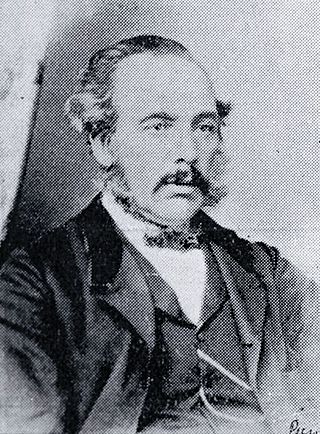
Nelson is a New Zealand city on the eastern shores of Tasman Bay at the top of the South Island. It is the oldest city in the South Island and the second-oldest settled city in New Zealand; it was established in 1841 and became a city by royal charter in 1858.

Brightwater is a town 20 kilometres (12 mi) southwest of Nelson in Tasman district in the South Island of New Zealand. It stands on the banks of the Wairoa River. Brightwater was first named Spring Grove. Alfred Saunders, the owner of a local flax mill situated on the banks of the Wairoa River and a prominent temperance activist, renamed it Brightwater because of the clarity of the water in Wairoa River. The settlement was named in 1855, but the area was settled as early as 1843.

Richmond is a town and the seat of the Tasman District Council in New Zealand. It lies 13 kilometres (8 mi) south of Nelson in the South Island, close to the southern extremity of Tasman Bay. The town, first settled by Europeans in 1842, was named in 1854 after the town of Richmond on Thames near London. The town has an estimated population of 19,200 as of June 2023.

Isaac Luck was a New Zealand architect. A professional builder, he arrived in Lyttelton on the Steadfast in 1851. He was the third chairman of the Christchurch Town Council. He was the brother-in-law of and in partnership with Benjamin Mountfort, and was the less well-known architectural partner for the design of the Canterbury Provincial Council Buildings.

The Diocese of Nelson is one of the 13 dioceses and hui amorangi of the Anglican Church in Aotearoa, New Zealand and Polynesia. The Diocese covers the northern part of the South Island of New Zealand, which is mostly the area north of a line drawn from Greymouth to Kaikōura.

The Cathedral Church of St David is the Anglican cathedral church located in Hobart, Tasmania, Australia. The cathedral is the mother-church for the Diocese of Tasmania. Consecrated in 1874, St David's is the seat of the Bishop of Tasmania, currently the Right Reverend Richard Condie. The dean is the Very Reverend Richard Humphrey.

Old St Paul's is a historic site, a city landmark and a wedding and event venue in the heart of Wellington, the capital city of New Zealand. The building served a dual role as the parish church of Thorndon and the pro-cathedral of the Diocese of Wellington of the Anglican Church between 1866 and 1964. It exemplifies 19th-century Gothic Revival architecture adapted to colonial conditions and materials, and stands at 34 Mulgrave Street, Pipitea, close to Parliament Buildings.

Thomas Brunner was an English-born surveyor and explorer remembered for his exploration of the West Coast of New Zealand's South Island.

Nelson Province was constituted in 1853 under the New Zealand Constitution Act 1852, and originally covered the entire upper South Island, including all of present-day Buller, Kaikoura, Marlborough, and Tasman districts, along with Nelson City, Grey District north of the Grey River, and the Hurunui District north of the Hurunui River. It was reduced in size by the creation of Marlborough Province in November 1859, then abolished in 1876, along with all the provinces of New Zealand.
Ngahere is a locality in the Grey District of the West Coast of New Zealand's South Island. The 2013 New Zealand census gave the population of Ngahere and its surrounding area as 363, an increase of 5.2% or 18 people since the 2006 census. Ngahere is located on the south bank of the Grey River, and State Highway 7 and the Stillwater–Westport Line (SWL) railway pass through the village.

Francis William Mary Redwood SM, was the first Roman Catholic Archbishop of Wellington, Metropolitan of New Zealand.
Brightwater railway station was a rural railway station that served the town of Brightwater in the Tasman district of New Zealand’s South Island. Brightwater is located on State Highway 6, approximately midway between the towns of Richmond, to the north, and Wakefield, to the south. It was one of 25 stations on the Nelson Section, and existed from 1876 to 1955.
Waimea was a parliamentary electorate in the Nelson Province of New Zealand, from 1853 to 1887. Initially represented by two members, it was a single-member electorate from 1861.
Charles Oliver Mules was the third Anglican Bishop of Nelson, whose Episcopate spanned a 20-year period during the late 19th and early 20th centuries.
The 4th New Zealand Parliament was a term of the Parliament of New Zealand.

Andrew James Richmond was a 19th-century Member of Parliament in Golden Bay / Mohua and Nelson, New Zealand.

John Fedor Augustus Kelling, JP, known as Fedor Kelling, was a 19th-century Member of the New Zealand Parliament, representing Nelson. A leader of a group of immigrants from Germany, he also served as the German consul.
John George Miles was a 19th-century Member of Parliament in Nelson, New Zealand.

The Church of St Michael and All Angels is an Anglican church located at 84 Oxford Terrace, Christchurch, New Zealand.

The Waimea Plains is a small but fertile area of low-lying land southwest of the port city of Nelson, situated on Tasman Bay / Te Tai-o-Aorere in the South Island of New Zealand. It is irrigated by the Waimea River from the Waimea Inlet in the north and bounded by the town of Brightwater in the south. The fertile soil promotes the growth of kiwifruit, apples and vineyards.
















